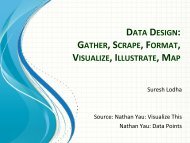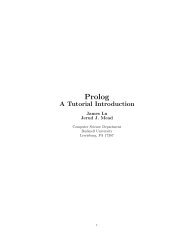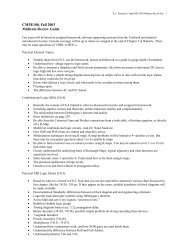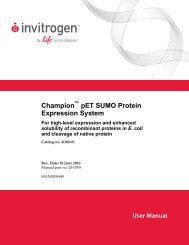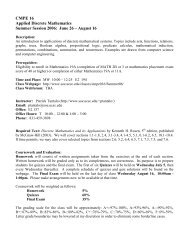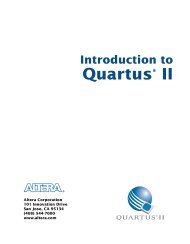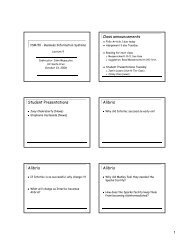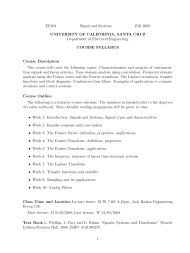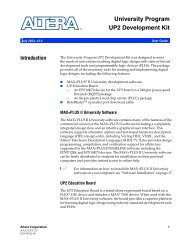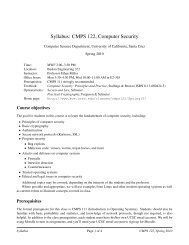The Esterel v5 21 System Manual - Courses
The Esterel v5 21 System Manual - Courses
The Esterel v5 21 System Manual - Courses
You also want an ePaper? Increase the reach of your titles
YUMPU automatically turns print PDFs into web optimized ePapers that Google loves.
Preface<br />
This manual describes how to use the <strong>Esterel</strong> <strong>v5</strong> <strong>21</strong> compiler, how to interface<br />
the generated code in embedded applications, and how to simulate<br />
<strong>Esterel</strong> programs using either the graphical simulator xes or the textual<br />
simulator csimul.<br />
<strong>The</strong> <strong>Esterel</strong> <strong>v5</strong> <strong>21</strong> compiler is an improvement over the former <strong>Esterel</strong><br />
<strong>v5</strong> 10 compiler. Some bugs have been fixed. <strong>The</strong> xes simulator has been<br />
improved; it now includes signal browsing facilities. <strong>The</strong> sccausal causality<br />
analyzer is much more efficient. <strong>The</strong> embeddable generated C code generated<br />
when not using option -simul is compatible with all the older versions.<br />
However, because of signal browsing facilities, the generated C simulation<br />
code is incompatible with that of <strong>v5</strong> 10. Please recompile your simulations.<br />
We assume basic knowledge of the <strong>Esterel</strong> language, which is presented<br />
in details in [2], and of issues such as program constructiveness, which are<br />
fully studied in [1]. <strong>The</strong> last reference also explains how <strong>Esterel</strong> programs<br />
are translated into Boolean circuits.<br />
Chapter 1, Getting Started, is a quick introduction. Chapter 2, Using<br />
the <strong>Esterel</strong> Compiler, tells how to compile programs using the esterel<br />
command. Chapter 3, <strong>The</strong> <strong>Esterel</strong> to C Interface, explains how to embed<br />
the generated code. Chapter 4, Building <strong>Esterel</strong> Simulators, explains how<br />
to build a simulator in a C environment. Chapter 5, <strong>The</strong> xes Graphical<br />
Simulator, explains how to perform graphical simulations, while Chapter 6,<br />
Simulation with csimul, presents the stream-based interactive or batch simulator.<br />
Chapter 7, Simulation Examples, presents a few examples. Finally,<br />
Chapter 8, Constructive Cyclic Programs in <strong>Esterel</strong> <strong>v5</strong> <strong>21</strong>, explains how the<br />
<strong>Esterel</strong> <strong>v5</strong> <strong>21</strong> compiler checks program for constructiveness and generates<br />
sequential code from cyclic programs. Since there are some limitations, it<br />
is important to read this chapter if you have to deal with cyclic valued<br />
programs.<br />
Please signal any bug or bad explanation and suggest any improvement<br />
by sending mail to esterel-users@sophia.inria.fr. We appreciate your<br />
1



